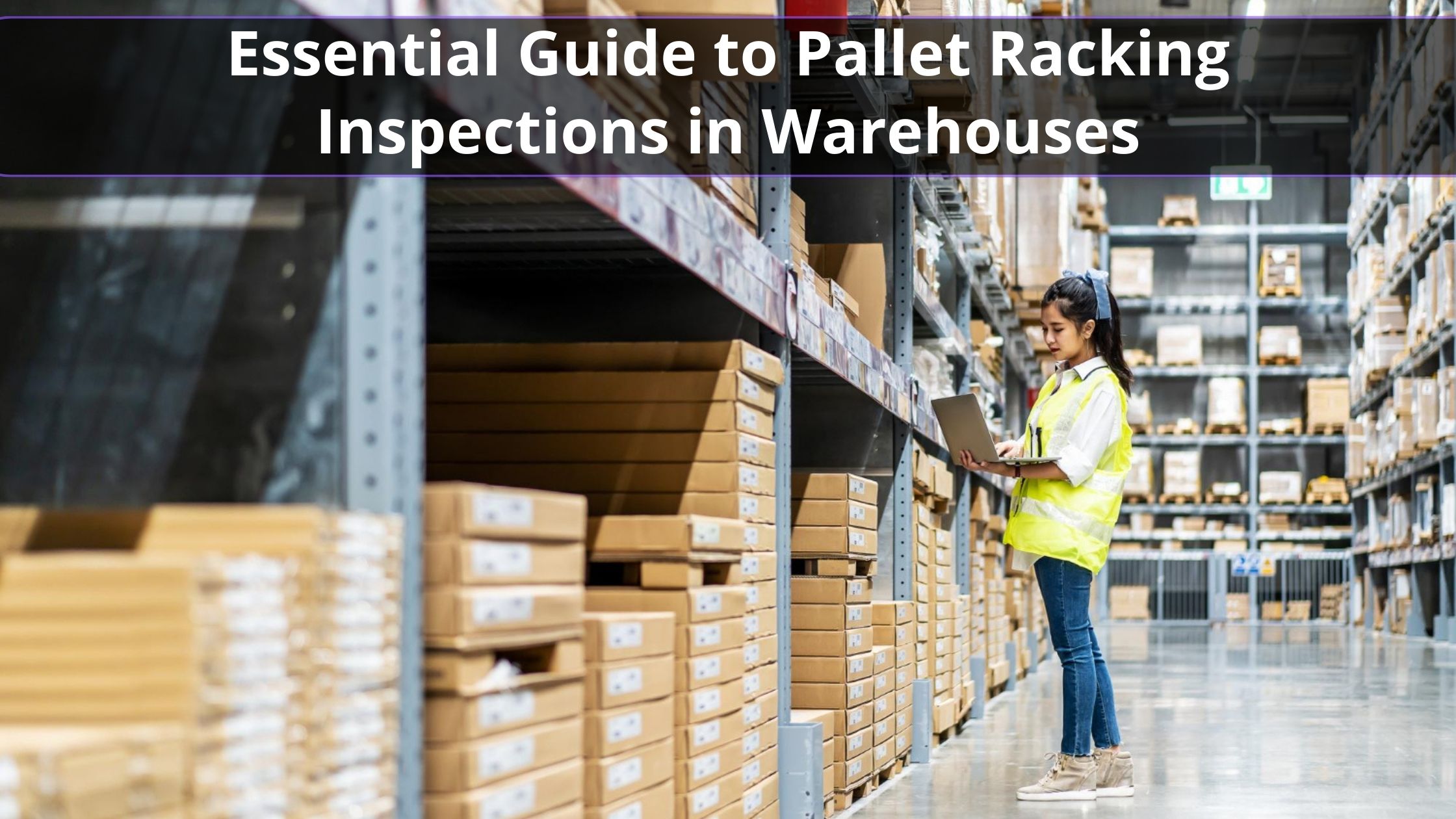
Pallet racking systems are typically at the heart of warehousing operations, providing critical storage solutions. These systems are not only fundamental for organizing products efficiently but also play a key role in maintaining workplace safety – however, regular inspections of these racking systems are essential, as they ensure that warehouses operate within safety norms while maximizing storage space.
This article examines why regular pallet racking inspections are imperative for maintaining warehouse safety and highlights their significance in preserving the structural integrity and functionality of these systems.
Understanding Warehouse Pallet Racking Systems
Pallet racking systems, the skeletal framework of warehouse storage, are ingeniously designed to store materials on pallets across multiple levels in horizontal rows. These systems come in various types and designs, each tailored to meet specific storage needs and optimize space utilization.
Selective racks are widely favoured for their accessibility, allowing easy retrieval of items, while drive-in racks offer a solution for high-density storage, maximizing space by enabling pallets to be stored in depth. Other types include push-back and pallet flow racks, which are optimal for high-throughput operations, while cantilever racks are ideal for long and bulky items.
Understanding the diversity and functionality of these systems is key to appreciating their critical role in efficient warehouse operations and inventory management.
Potential Risks of Neglected Pallet Racking Systems
The neglect of regular maintenance for pallet racking systems can lead to dire outcomes. Rack collapses and accidents from compromised structural integrity are not just theoretical risks – they are real events with potentially devastating consequences. These incidents can result in serious injuries to staff and significant damage to stored goods and warehouse equipment.
Workflow disruptions from such events can be severe, leading to operational downtime and loss of productivity. The financial impact is often substantial, affecting a company’s profitability through lost inventory, workers’ compensation claims, legal actions, and even potential penalties.
Regular maintenance and inspections are essential to mitigate these risks and ensure the ongoing safety and efficiency of warehouse operations.
Legal and Compliance Aspects
Adhering to legal requirements and safety standards is non-negotiable in warehouse operations – regular and thorough inspections are critical to ensure compliance with these standards, playing an important role in safeguarding against accidents and legal repercussions.
Non-compliance can lead to severe consequences, including hefty fines, legal disputes, and jeopardized insurance coverage, which can tarnish a company’s reputation and financial stability. Additionally, adherence to these standards is vital for ensuring the safety and well-being of employees, reinforcing the company’s commitment to a safe working environment.
It’s imperative for warehouse managers to stay updated on these regulations and implement rigorous safety protocols to maintain a compliant and safe operation.
Benefits of Regular Warehouse Racking Inspections
Conducting regular pallet racking inspections yields significant benefits. These include enhanced safety, leading to a reduced risk of accidents and injuries. Additionally, regular checks can extend the lifespan of racking systems and improve overall operational efficiency. Warehouses that adhere to strict inspection schedules should expect to experience fewer accidents and report higher productivity levels, underscoring the value of these practices.
What Does a Pallet Racking Inspection Entail?
A pallet racking inspection involves a comprehensive evaluation of the system’s condition. Inspectors examine structural integrity, load capacities, and the condition of safety accessories – they will look for damage to racking components, check the condition and position of pallets, check the system has been installed as per manufacturers specification and assess the suitability of the system for the current warehouse operations.
This process is thorough, ensuring that every component of the racking system meets safety standards and operates effectively.
Who Should Conduct Pallet Racking Inspections?
Pallet racking inspections should only be carried out by individuals with the necessary expertise. While in-house checks by trained staff are beneficial for ongoing maintenance, formal assessments require SEMA-certified professionals. These experts possess the knowledge and skills to identify potential issues and recommend appropriate corrective actions – SEMA racking inspections ensure that the racking systems meet all safety and operational standards.
Creating a Culture of Safety in the Warehouse
Regular inspections play a vital role in promoting a safety-first mindset within warehouse operations. Encouraging staff to prioritize safety and be proactive in identifying potential hazards can directly lead to a more secure and efficient working environment. Beyond just inspections, establishing a safety-centric culture involves several key strategies:
- Regular safety training sessions keep staff updated on best practices and emerging risks, creating a knowledgeable workforce equipped to handle various scenarios.
- Open communication about safety practices, where employees feel comfortable reporting potential hazards and discussing safety concerns, is essential. It encourages a collaborative approach to safety, where every team member feels responsible and empowered to contribute.
- Recognizing and rewarding safe work practices also plays a key role. Implementing recognition programs for employees who consistently adhere to safety protocols or who contribute innovative safety ideas can significantly boost morale and reinforce the importance of safety in everyday operations.
These initiatives, combined with a commitment to regular equipment and process reviews, ensure that a culture of safety is both a policy and a core value integrated into every aspect of warehouse operations.
Incorporating Technology in Pallet Racking Inspections
Technological advancements, like warehouse management systems (WMS) and IoT sensors, are revolutionizing pallet racking inspections. These tools offer real-time monitoring and advanced analytics, aiding in preventative maintenance and enhancing overall safety.
The future of pallet racking safety lies in the further integration of such technologies, paving the way for more automated and efficient inspection processes.
Conclusion
Regular pallet racking inspections are fundamental to maintaining a safe and efficient warehouse environment. They prevent accidents, ensure compliance with legal standards, and contribute to a culture of safety. Embracing technological advancements further enhances these inspections, promising a future where warehouse operations are safer, more efficient, and technologically driven.
Get in touch with the SEMA-certified team at SEE Racking Inspections to discuss your inspection needs and make the move toward a more productive and secure warehouse operation.





